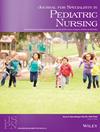Trends in substance use among sexual minority adolescents in South Korea
Abstract
Purpose
Substance use, that is of cigarettes, alcohol and chemical inhalants, is a major contributor to health-compromising behaviors and the related consequences among adolescents around the world. The purpose of this paper is to examine trends in this phenomenon in South Korea among sexually active adolescents who reported sexual minority behaviors as compared to their heterosexual (HS) peers.
Design and Methods
This study used data from the annual web-based survey called Korea Youth Risk Behavior Survey in 5-year intervals: 2006, 2011, and 2016. From 2017, the questions regarding the gender of sex partners were excluded from the survey, thus no data is available for sexual minorities after 2016. Selected data (Unweighted n = 10,029) was used to assess whether substance use increased, decreased, or remained unchanged among adolescents who reported same-sex (SS) behaviors and bisexual (BS) behaviors compared to their peers reporting HS behaviors. Demographic variables included age and assigned gender. Substances referred to are cigarettes, alcohol, and chemical inhalants. Logistic regression models were sex-stratified according to assigned gender. Trend analyses were carried out to examine disparities in substance use among sexually active adolescents across the three survey years.
Results
Across the three survey years, cigarette use, alcohol use, and problematic drinking declined among all sexually active youths, but there were some differences among the subgroups. In 2016, SS girls were more likely to use cigarettes than HS girls. The prevalence of alcohol use and problematic drinking among BS girls was relatively higher than among girls who exhibited either HS or SS behaviors. Inhalant use was very high among both boys and girls with SS and BS behaviors.
Practice Implications
The findings of the study reveal disparities in substance use between sexual minority and heterosexual adolescents in South Korea. This creates an alarm for collecting data separately for sexually diverse youth in future Korean national surveys with a goal of reducing substance use among all adolescents.

 求助内容:
求助内容: 应助结果提醒方式:
应助结果提醒方式:


